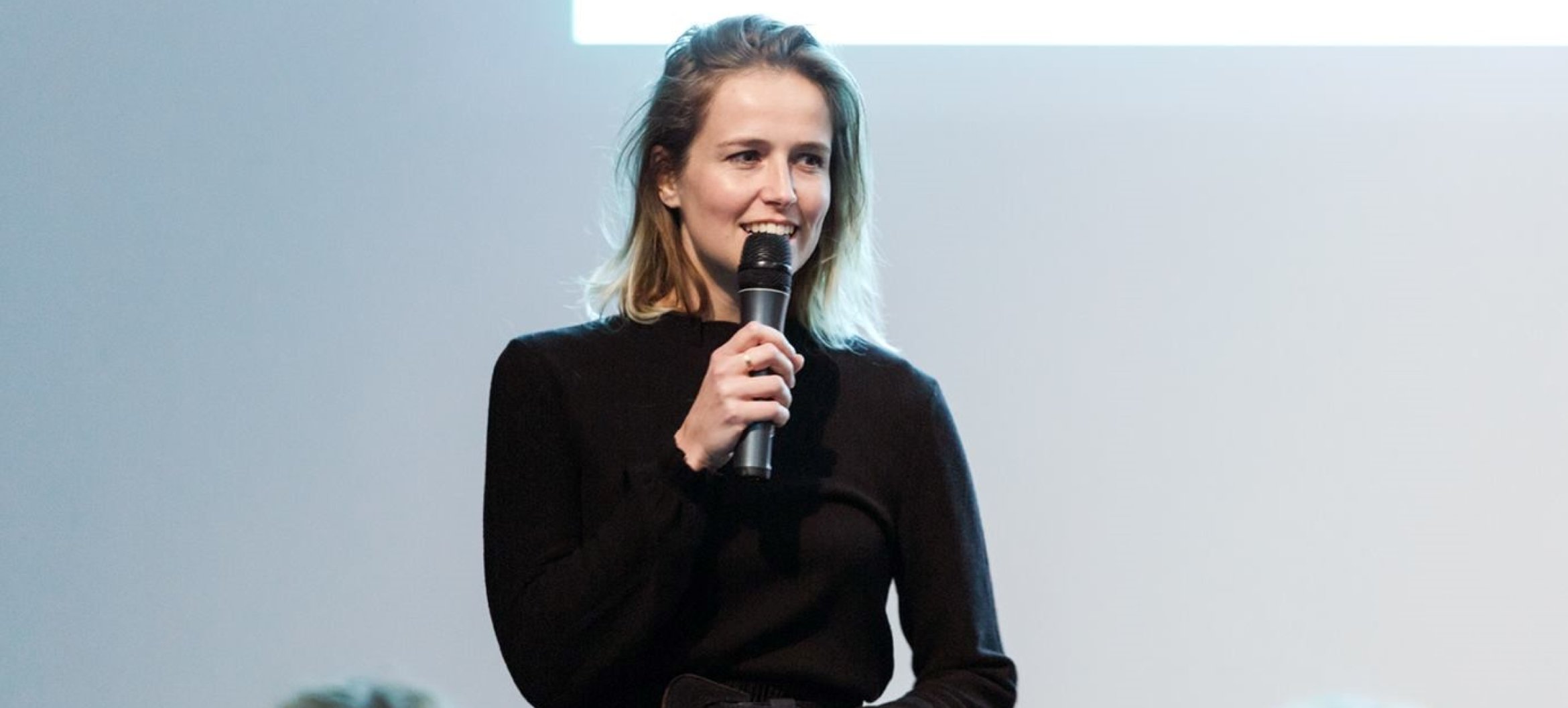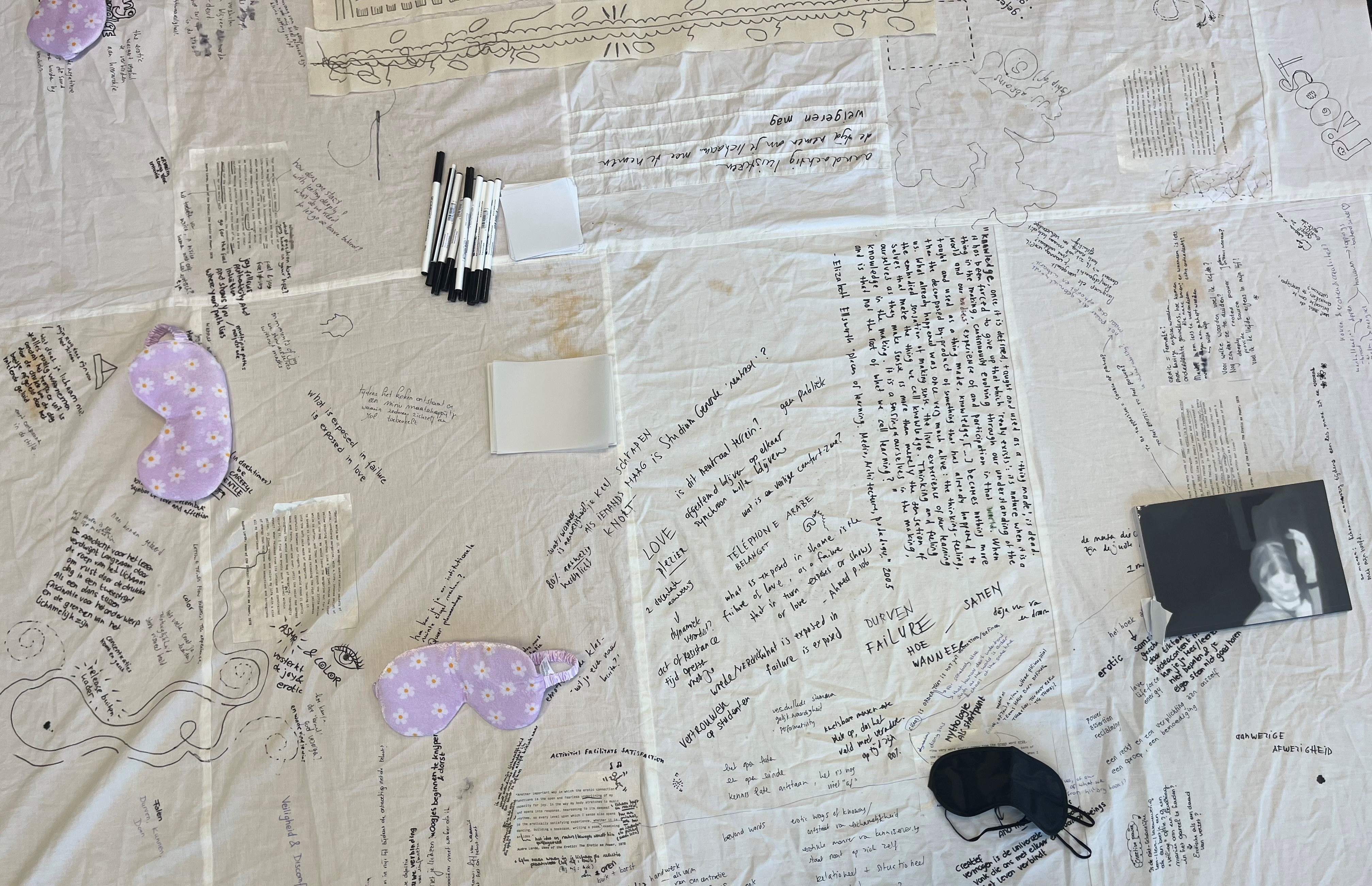Lecturer and researcher Jesse van Oosten: "Learning as interaction and room to fail"
- Design
- Education in Art
The future of the art school – what will it look like? What building will it be in? Will there still be a building? How will students and lecturers relate to one another? In the Future Art School conference at ArtEZ, various experts will discuss that future. One of them will be lecturer Jesse van Oosten, who teaches art theory on the Fine Art and Design in Education bachelor’s course in Arnhem. During her Education in Arts master's course at the Piet Zwart Institute, she also investigated how the intimacy of the everyday can be a guide for new ways of learning and designing an educational space.

"When it comes to the art school of the future, it is important to broaden the term 'learning'. Currently, students mainly learn individually, it is an internal process – certainly in the theoretical subjects I teach. But what I find interesting – and I investigated this in my master's course – is to think about a way of learning in which closeness and connection are important. The unpredictability of learning is also part of it", says Jesse. "That needs to be accompanied by a different approach to failure. What do we need to change within the current system of testing and assessment in order to be able to embrace failure more?"
Relating to your environment
"Classrooms, lecture theatres; they are often spaces that don't have much atmosphere and where little attention is paid to how people feel there. Yet the environment definitely does impact how you learn and feel. In my research, I explored; what makes you feel safe in a classroom? What is the role of atmosphere and who or what is responsible for that?", says Jesse. "Education is not just about rationality, but about how you feel in a situation. 'The intimate' is what I have called that in my research. That can be a tangible or intangible space that you create with everyone in the class and that arises in the encounter with others and sometimes also with things."
I find it interesting to look at a way of learning in which proximity and connection are important. The unpredictability of learning is also part of it."
In the ‘Pillow Talk’ reading group, she explored with students different ways of approaching a space and learning. What if you were to see a classroom as a place where you sit down together at the kitchen table? What does that do to the relationships between students and lecturer and who shares what knowledge? How can we approach cooking together as a form of thinking? By using the space and thinking about how we encounter each other there, particular power relationships take on a different meaning", says Jesse. An important point for the art school of the future to take into account.
Change in the student – lecturer role
In addition, the role of the lecturer and the relationship between students and lecturers are important points for the future of Jesse's art school. “During the activities of the Pillow Talk reading group, I was not just a lecturer but also a participant and host. As a result, I noticed that the responsibility no longer lay only with me. We were jointly responsible for learning and for the atmosphere. For instance, we explored what was is like to all sing karaoke together and get over the shame of showing yourself. Experiencing that change as a group, from the fear of failure to the euphoria after singing, that was really valuable."

"Of course expertise is essential and it's good that there are lecturers to pass on that knowledge, but it doesn't always have to be one-way traffic. I am keen to have more movement and reciprocity in my classes", she says. "But it will take time and energy to change that. Those prerequisites are essential for the future. Change comes in little steps. You can do it by literally redesigning a space, asking students at the start of the year how they see the classroom and what they like."
It's a bit more horizontal like that, the learning process and assessment. There may be more focus on that within arts education; learning as an interaction and room to fail."
Last year, after the end of a subject block, Jesse would write a letter to the entire group, instead of giving individual assessments. "I told them how it had been for me, what I had learned during our sessions and how I saw their learning process. That is a very intimate, personal way of sharing. Another pedagogical experience, in which the lecturer demonstrates that it is possible and beautiful to be vulnerable. And to show that I am also learning from you – it's a bit more horizontal like that, the learning process and the assessment", she says. "It would be good to pay more attention to that within art education; learning as an interaction and room to fail."
Curious about Jesses research at the Piet Zwart Institute? You can read her entire research on this website.
Would you like to read and learn more about how ArtEZ is working on the art academy of the future? This story is part of a triptych of stories. For example, also consider reading this interview with Marijke Goeting, where you can learn everything about the influence of new technology on the art academy. Or delve deep into the illustrious art academies of the past with this story about Joanne Dijkman's research. ArtEZ Studium Generale has also organized a conference titled Future Arts School, and compiled an online listening and reading dossier around the conference and this theme. You can find the link to the dossier here.


